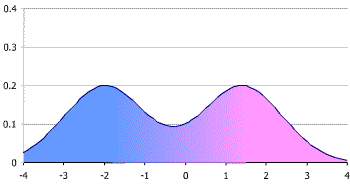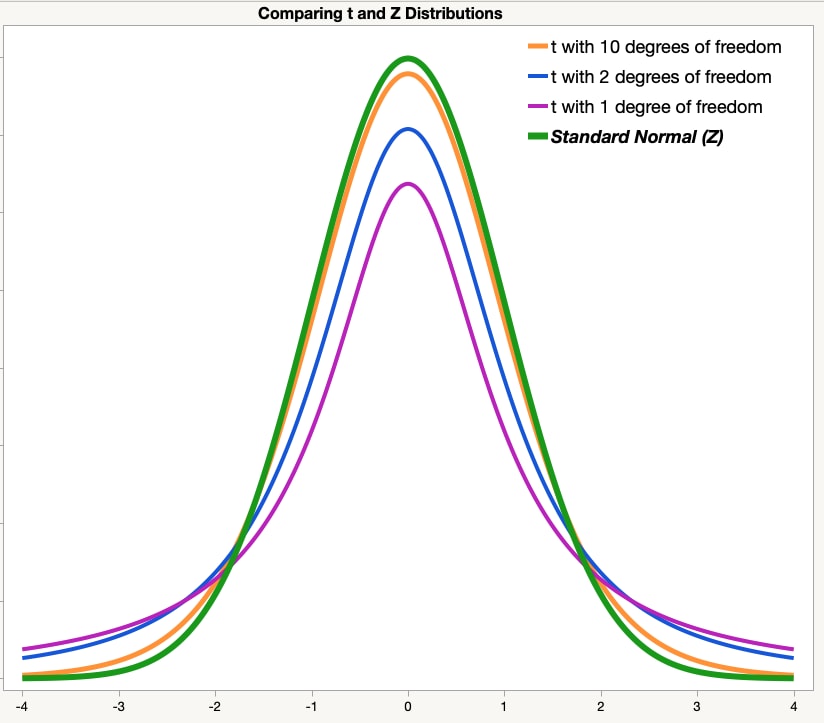A Symmetric Distribution Can't Have Which of the Following Characteristics
This question has multiple correct options. What is 159095 rounded to the nearest ten.
ϕ X t ϕ X t for all t.
:max_bytes(150000):strip_icc()/dotdash_Final_T_Distribution_Definition_Oct_2020-01-fdfa54d385de4cfca5957da94bbab89f.jpg)
. But for any characteristic function. A symmetric distribution is one where the left and right hand sides of the distribution are roughly equally balanced around the meanThe histogram below shows a typical symmetric distribution. A box plot can also show you whether a distribution is symmetric negatively.
For such an interval which can be in fact an union of disjoint intervals if the distribution is not unimodal every point included has higher probability density than every point excluded. All of the above are characteristics of a normal distribution. The T distribution like the normal distribution is bell-shaped and symmetric but it has heavier tails which means it tends to produce values that fall far from its mean.
If A and B are two events then which one of the following is not always true. If the data is symmetric a histogram can tell you whether the data is bell shaped bimodal or uniform etc. The mean of the distribution can be negative zero or.
After tax a 20 tip is added what is the total after tax. Follow asked Nov 1 2015 at 2319. Which of the following is not a characteristic of the normal probability distribution.
If the characteristic function of a distribution is real then the distribution is symmetric probability-theory characteristic-functions. The values of the mean median and mode are equal. It is asymmetrical d.
Maximum column is in the middle of data set. The mean median and the mode are equal b. The normal distribution is.
If a line were drawn dissecting the. If b a 0 the distribution of X must have a period of b a which is impossible because the. In this case we say that the distribution is skewed.
Then applying both symmetries we see that X is invariant under the translation x x 2 b a. All of these answers are true for the F-distribution c. Data is equally split on the left and right sides of median.
A symmetrical distribution occurs when the values of variables appear at regular frequencies and often the mean median and mode all occur at the same point. A symmetric distribution has zero skewness but a distribution can have zero skewness and be asymmetric. It is a discrete distribution b.
In statistics a symmetric probability distribution is a probability distributionan assignment of probabilities to possible occurrenceswhich is unchanged when its probability density. Which of the following is not a characteristic of the normal distribution. For symmetric distributions the mean is approximately equal to the medianThe tails of the.
Mean and median are approximately equal. There is 7 sales tax. Only some of the above are.
The skewness of a random variable X is defined as. A meal cost 30 before tax and tip. When the characteristic function ϕ X of a random variable X is real-valued that means.
ϕ X t ϕ X t ϕ X t showing. Which of the following is not a characteristic of the F-distribution. It has a bell shape.
Which of the following is true for a distribution to be symmetrical. A distribution that is not symmetric must have values that tend to be more spread out on one side than on the other.

Positively Skewed Distribution Overview And Applications In Finance

Symmetric Distribution In Statistics Statistics How To

The T Distribution Introduction To Statistics Jmp

The Normal Distribution Sociology 3112 Department Of Sociology The University Of Utah
Comments
Post a Comment